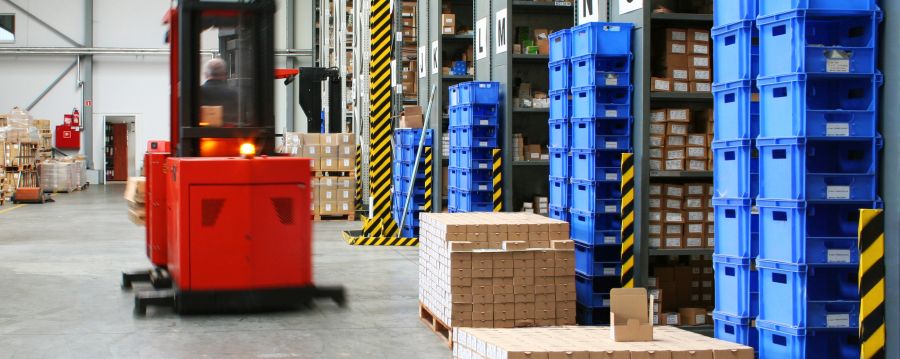
Safety Tip: Ensure Safe Forklift Operation

Forklifts must be checked for defects daily, usually by the operator before beginning a shift. Even with safe operation, a vehicle defect can cause or contribute to a serious accident. Assuming your vehicle passes pre-use inspection, follow these tips from the Washington Division of Occupational Safety and Health to help ensure safe forklift operation.
Basic Forklift Safety Rules
The basic rule for safe forklift operation is that you maintain control of your forklift at all times. Other rules include:
- Operate a forklift only while in the seat or operator’s station. Never start it or operate the controls while standing beside the forklift.
- Never allow passengers unless the forklift was designed for a passenger.
- Do not put any part of your body between the uprights of the mast or when traveling, outside of the forklift frame.
- Always look in the direction of travel and keep a clear view of the travel path. Travel in reverse if the load blocks your view.
- Always observe posted speed limits at your workplace. A forklift should not be driven faster than a quick walking pace.
- Keep a distance of at least three forklift lengths between you and any forklift traveling in front of you.
- Do not pass another forklift traveling in the same direction if it is at a blind spot, intersection or other dangerous location.
- Never drive a forklift up to anyone in front of a bench or other fixed object.
- Never allow anyone to walk or stand under the elevated forks – even if the forks are not carrying a load.
- Check that there is adequate clearance under beams, lights, sprinklers, and pipes for the forklift and load to pass.
- Never engage in stunt driving or horseplay
Tips to Prevent Forklift Accidents
- Provide Proper Training, and supervise new or inexperienced drivers. consider eye exams as well as driving assessments.
- Post Warning Signs and Traffic Markings. Wherever foot traffic and forklifts must co-exist, forklift safety signs are a must. Consider floor tape and heavy-duty floor labels to mark changing floor grades, forklift lanes and to alert pedestrians.
- Slow Down. OSHA advises drivers to stay at or below 5 miles per hour.
- Lower the Load. OSHA recommends carrying loads as near to the ground as possible – about 4 inches from the floor.
- No Operators Under Age 18. That’s a Federal law.
- Slow Down Before Turning. Forklifts are designed to balance heavy loads, so without a load they can be a bit tippy.
- No Riders on the Forklift. They’re not designed for passengers, so riders can easily fall – or distract the driver and indirectly cause an accident.
- A Forklift is Not a Ladder. Lifting workers on forks to reach items or work at heights is not a good idea.
- Use the Right Tool. Lift trucks are available in varied sizes and designs, so choose one that fits your workplace
Forklift Safety Resources:
- Download the complete State of Washington Forklift Safety Guide here (pdf).
- Visit the OSHA forklift safety page.
- Read and download sample OSHA daily safety checklists for forklifts.
- Learn more about forklift safety and training.
- How to maintain forklifts in every season.
- Browse forklift safety signs at ComplianceSigns.com.

